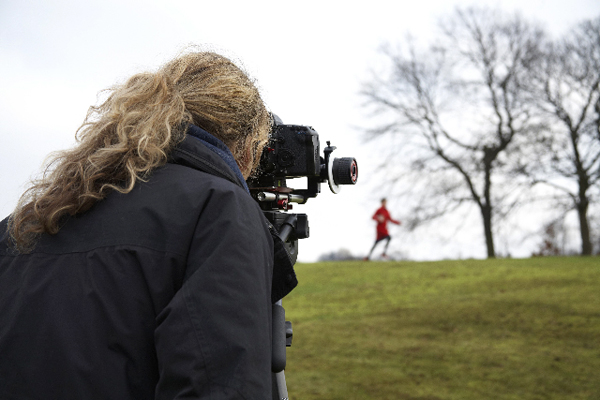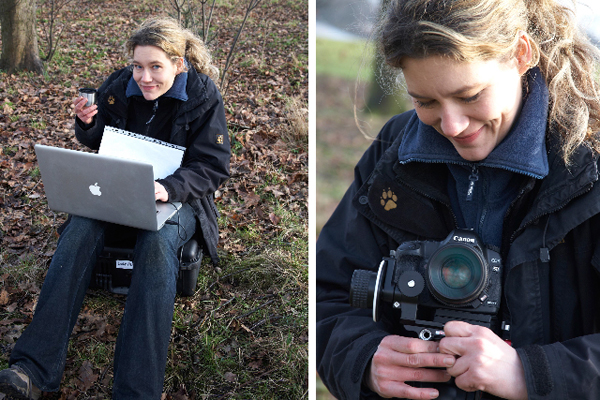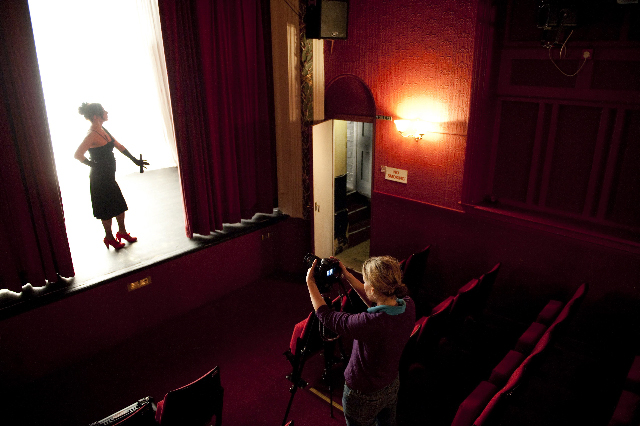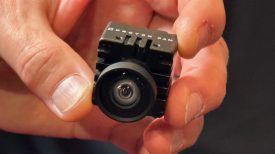A snapper’s thoughts on how a stint in short-film shooting can provide valuable experience for creating cinematic documentary pieces
I am a newspaper photographer for The Daily/Sunday Telegraph and The Times (UK) and took my first steps into DSLR-video shooting when the Canon 5DmkII came out. I started with a “shut up and shoot” approach and an interest in short pieces I felt were better captured with video than pictures only, such as 16 Teeth, capturing Cumbria’s last traditional rakemakers:
16 TEETH – Cumbria’s last traditional rakemakers from Rii Schroer on Vimeo.
However, a recent stint in short-film making (taking part in the Canon/Vimeo contest: Beyond the Still by Vincent Laforet) was a real eye-opener into the wide possibilities of cinematic DSLR- video shooting. I found some of these experiences of great inspiration and good training for documentary/feature/news reporting.
In short-film making every sequence needs as much planning as possible, and the intensity of the visual side produces the discipline of looking at the shoot in-depth from as many different views as possible. It is about getting to grips with how to achieve certain shots technically and looking into what equipment can be useful in creating those shots.
HEARTBEAT – 5D Mark II from Rii Schroer on Vimeo.
Doing a cinematic short, you try to figure out how emotion, a sense of place, action, or the revealing of layers can be solved technically. What visual look and feel do you want to give your piece to transmit your message? How can this look be created? It is a good playground for trying out various techniques and equipment, such as pulling focus, car suction mounts and Glidetracks. You are also considering when to use static shots or steady/Glidecam/handheld rig images, what ratio of wide, middle, tight shots to go for, or whether a panoramic shot, timelapse or slow motion sequence might add to the story.
Experimenting with creating a short film was a fun experience, although a quite time consuming one. I have been told by a filmmaker, add 2 or 3 times the time you expect it to take, which was about right in this instance.


Our piece was created in two-and-a-half weeks from the idea, through scriptwriting and three days of shooting, to editing – alongside our day jobs. Locations had to be scouted; permission for shooting in the parks obtained; schedules for team, composer, and actors drawn up (this was a no budget production); equipment, insurance and props organized; whilst praying for the weather to stay stable (no rain or snowstorms!)
We wanted to try out as much equipment as we could get our hands on to get as much experience as possible. Lighting for the moving image proved to be challenging; for example, in the moving car scene, getting rid of reflections from our modelling light flash units. LCD-lighting panels, which we gelled with CTOs, were great to use for the night scenes. As we did not go for much dialogue, we put sound issues to one side during the shoot. In retrospect it proved to be a mistake, costing valuable hours in the editing suite.
Not only did we acquire valuable experience during the shoot, we also learnt a lot in retrospect, analysing what we could have done differently and more coherently – especially regarding the running scenes (shorter edit, more camera movement). Setting a deadline for your project feels important though.
I found that, even if some equipment will not always be of use for documentary film-making (eg if you have to keep it small-scale for a “fly on the wall” approach), gaining knowledge about what works well in certain situations and how to use it is immensely helpful. No matter what field one is in, it is beautiful to create visually attractive pieces, and this is the fun part of using your photographic knowledge.

The five amazing entries that made it to the final of the Beyond the Still competition were produced by professional production/videographer teams not by the targeted sector of “photographers becoming filmmakers.” This is an interesting trend that was confirmed at the recent Broadcast Video Expo in London; it seems that it is the professional filmmakers, who are going crazy about DSLR shooting. But watching and creating cinematic shorts can be exciting for the documentary shooter and useful for creating strong sequences and story telling in the documentary field of work. And the amazing technical possibilities offered by HD DSLR cameras leave no excuse not to get your hands on one and use your knowledge and expertise, already acquired through photographic reportage/news work, to create those stories you want to tell.
Rii Schroer
www.riischroer.de
http://www.vimeo.com/user1008646





